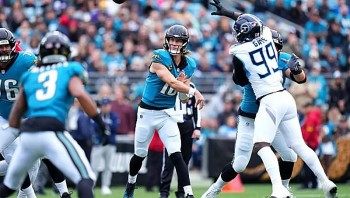Top 20 Most Popular Fable Books in the World of All Time That You Must Read
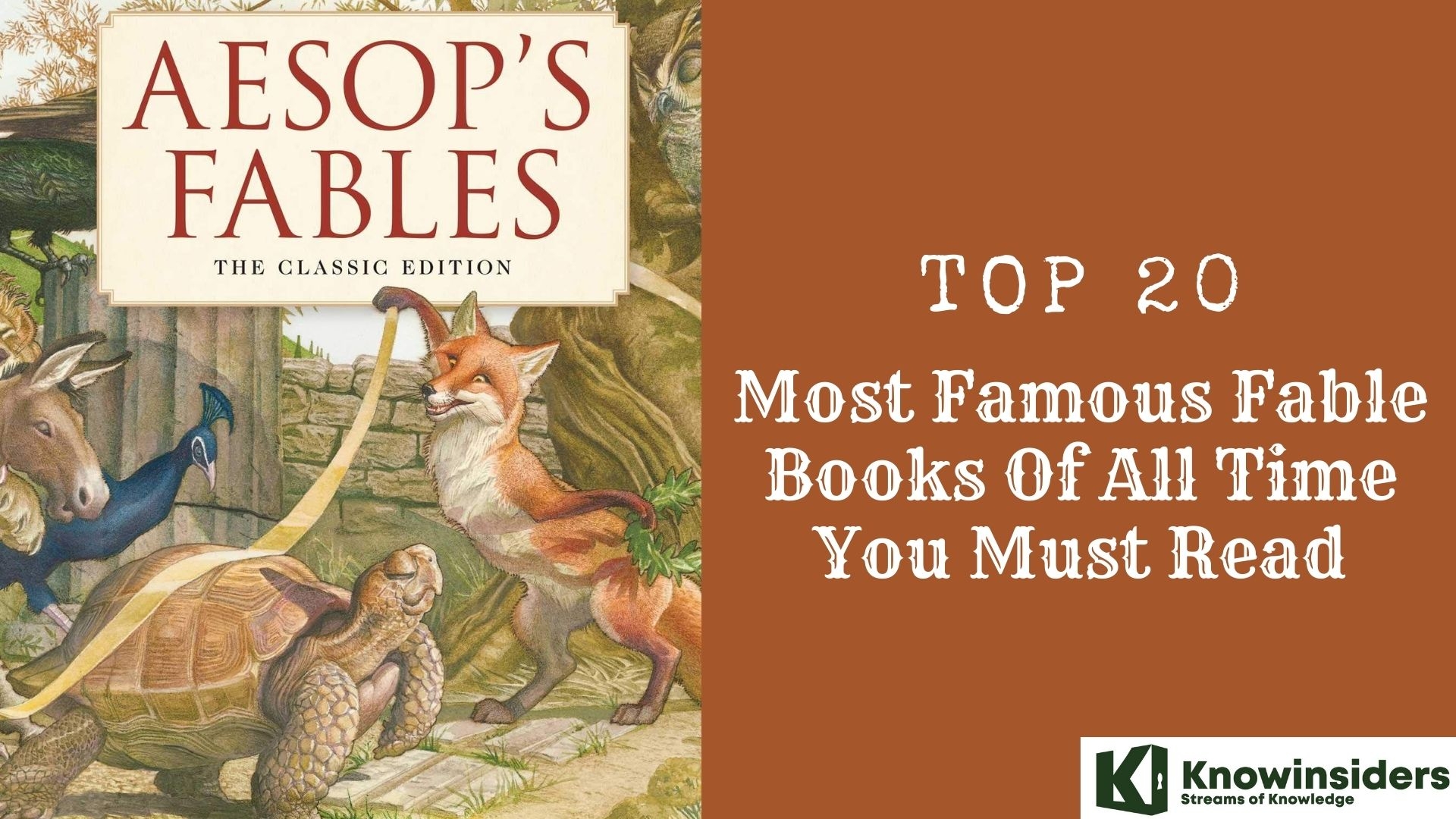 |
| Top 20 Most Famous Fable Books Of All Time You Must Read |
| Table of Content |
Famous fable books and stories have been passed down from generation to generation over the ages. Stories like these have endured and will continue to do so. Famous fables actually have a common subject of morality and tenacity, somewhat like fairy tales. Aesop, a Greek slave who produced over 725 tales, is possibly the author of the most well-known collection of fables.
Here are the most famous fable books of all time that you can find and read, ranked by Knowinsiders.com.
What Is a Fable?
A fable is a brief tale used to teach a moral lesson. A fable's plot often consists of a straightforward conflict, a solution, and a moral. The principal protagonists in fables are anthropomorphized animals and natural phenomena.
A fable typically finishes with a statement of its moral, which is a general rule to live by that transcends the details of the story. For instance, in the tale of the wolf and the sheep, a wolf disguised as a sheep might easily enter the sheep's pasture without being seen and devour the sheep. The story's lesson is that people can be fooled by outward appearances.
Fables are defined by four central essential elements:
Symbolism. Characters in fables are stand-ins for humans, and their misadventures are meant to symbolize human behavior.
Anthropomorphization. In fables, animals and even inanimate objects (like the wind, or the sun) are the main characters of the story and are given human qualities. Some animals have specific traits associated with them. For example, an owl is wise, a fox is cunning, and a lion is brave.
Lessons. Every fable has a moral lesson at the end that arises from the story. For example: “Slow and steady wins the race.”
Humor. Fables often have a humorous tone when showing the foolishness of human nature.
Where Did Fables Originate?
Fable is derived from the Latin word "fable," which means "story." The legendary Greek fabulist Aesop is the source of the majority of fables in Western culture. Fables were taught to students in ancient Greek classrooms, and they were also urged to create and perform their own. A few of Aesop's fables date back to the first millennium BCE and come from India.
Fables have a long history in Europe. Aesop served as an inspiration for French fabulist Jean de la Fontaine in the seventeenth century as he created fables that mocked the court, the church, and the ruling class of the day. De la Fontaine regarded the fable's lesson as its central theme. De la Fontaine served as an inspiration for other writers throughout Europe, including the Russian fabulist Ivan Krylov.
There are few exceptions to the rule that fables are typically written to teach children the proper conduct and values of their society. For instance, despite being a satire written for adults, George Orwell's allegorical work Animal Farm shares several traits with a fable.
Some of the most famous fables include:
The fox and the grapes. This fable is where the expression "sour grapes" first appeared. A fox spots some grapes perched high on a branch and becomes desperate to get them. He tries to reach them with a running jump but falls short. He makes numerous more attempts in vain. He finally gives up and turns to leave with contempt. "There are those who claim to dislike and denigrate something which is beyond their reach," is the lesson of the story.
The lion and the mouse. A mouse is caught by a lion and begs to be released. In exchange for the lion's life, the mouse swears to pay him back. In agreement, the lion releases the mouse. A few days later, the mouse sees the lion caught in a hunter's net and, recalling the lion's kindness, begins to nibble on the rope until the lion is released. The lesson in this tale is that showing kindness never goes to waste.
The tortoise and the hare. A race between the tortoise and the hare gets started. The hare mocks the tortoise, saying that it comes naturally to him to move so much more quickly. The hare spends a lot of time during the race relaxing and taking multiple extended rests. The turtle continues to move steadily in the meantime. The tortoise ultimately prevails. The story's lesson is that "Slow and steady wins the race."
The fox and the crow. A crow perched in a tree with some cheese in its mouth is discovered by a hungry fox. The fox starts speaking to the crow, telling her that because she is so lovely, she must also have a beautiful voice. The crow first keeps quiet while clinging to her cheese. She finally opens her mouth to crow, though, after receiving much adulation. The fox picks up the cheese and eats it. "The flatterer lives at the expense of those who will listen to him," is the story's moral.
Top 20+ Most Popular Fables and Lesson of All Time You Should Read For Kids
What Are Most Famous Fable Books in the World of All Time You Must Read?
1. Aesop’s Fables (The Classic Edition) by Charles Santore
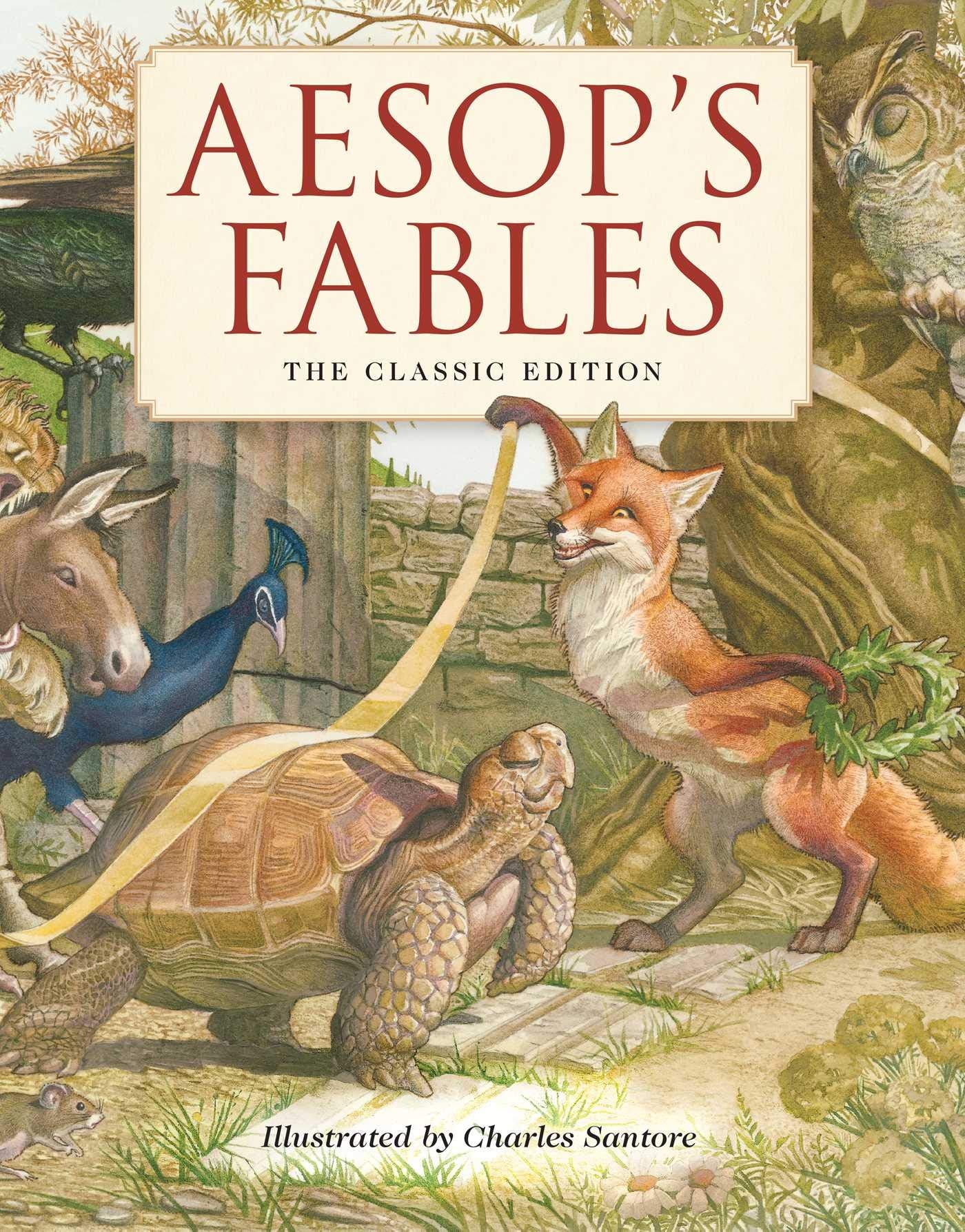 |
| Photo: Amazon.com |
Revive your childhood wonder and fascination with the most exquisitely illustrated edition of Aesop’s Fables to hit the market in years—featuring breathtaking original artwork by #1 New York Times bestselling illustrator Charles Santore!
Captivating the hearts and minds of kids and adults for generations, Aesop, a former Greek slave, developed simple and meaningful adventures featuring animals or insects to teach a moral standard or lesson for living. This classic edition of short stories is brought to life with breathtaking illustrations by New York Times #1 Bestselling illustrator Charles Santore. The most well known and well loved of Aesop's fables are included to help boys and girls learn which traits are desirable and which are less than desireable, including:
- The Hare and the Tortoise
- The Lion and the Mouse
- The Town Mouse and the Country Mouse
- The Wolf in Sheep's Clothing
The work of New York Times bestselling children’s book illustrator Charles Santore has been widely exhibited in museums and celebrated with recognitions such as the prestigious Hamilton King Award, the Society of Illustrators Award of Excellence, and the Original Art 2000 Gold Medal from the Society of Illustrators. He is best known for his luminous interpretations of classic children’s stories, including The Night Before Christmas, Alice's Adventures in Wonderland, Aesop's Fables, The Classic Tale of Peter Rabbit, The Little Mermaid, Snow White, The Velveteen Rabbit, The Wizard of Oz, and more!
2. Animal Farm by George Orwell
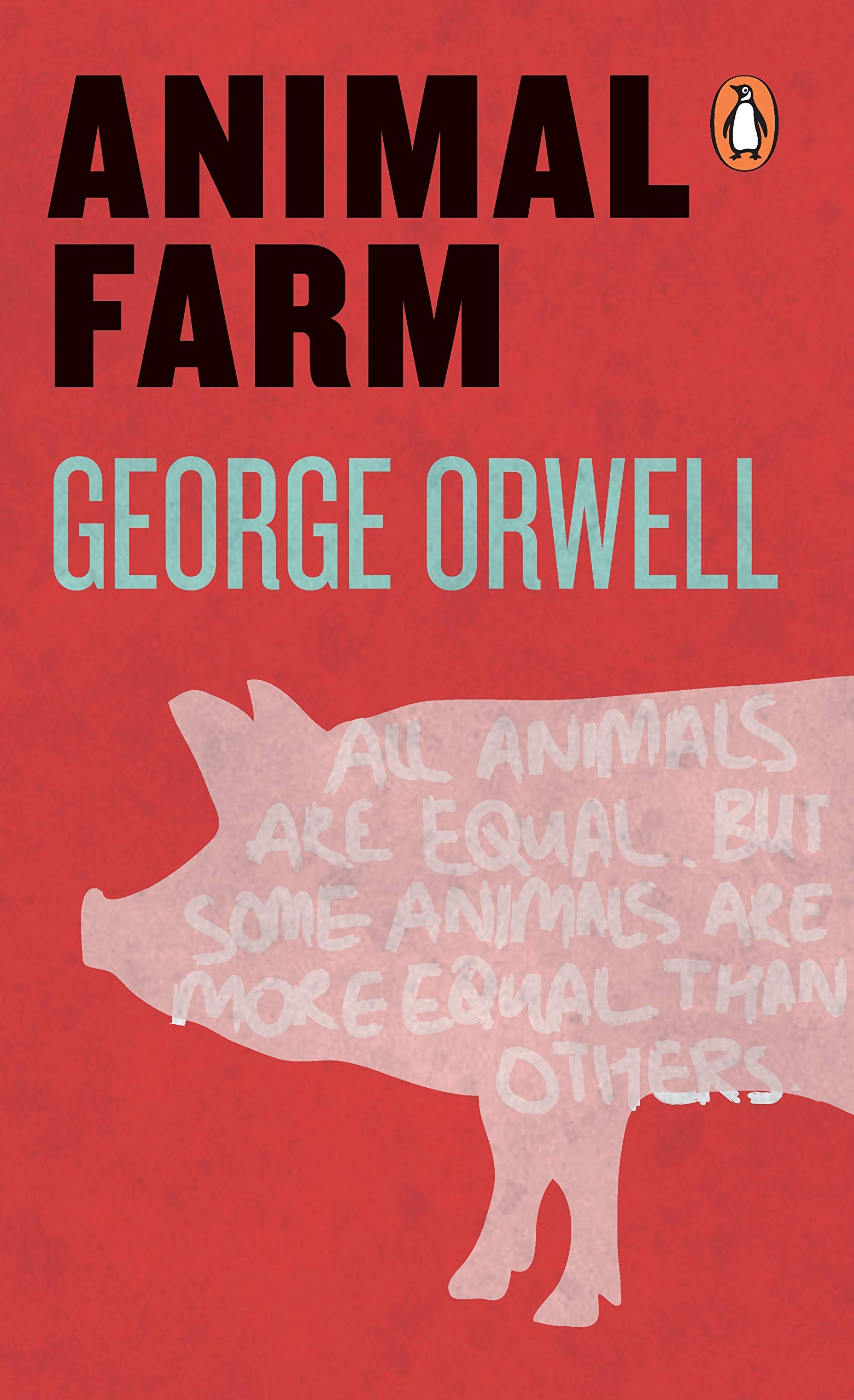 |
| Photo: Amazon.com |
Animal Farm is a satirical allegorical novella by George Orwell, first published in England on 17 August 1945. The book tells the story of a group of farm animals who rebel against their human farmer, hoping to create a society where the animals can be equal, free, and happy. Ultimately, the rebellion is betrayed, and the farm ends up in a state as bad as it was before, under the dictatorship of a pig named Napoleon.
According to Orwell, the fable reflects events leading up to the Russian Revolution of 1917 and then on into the Stalinist era of the Soviet Union. Orwell, a democratic socialist, was a critic of Joseph Stalin and hostile to Moscow-directed Stalinism, an attitude that was critically shaped by his experiences during the May Days conflicts between the POUM and Stalinist forces during the Spanish Civil War. In a letter to Yvonne Davet, Orwell described Animal Farm as a satirical tale against Stalin ("un conte satirique contre Staline"), and in his essay "Why I Write" (1946), wrote that Animal Farm was the first book in which he tried, with full consciousness of what he was doing, "to fuse political purpose and artistic purpose into one whole".
The original title was Animal Farm: A Fairy Story, but US publishers dropped the subtitle when it was published in 1946, and only one of the translations during Orwell's lifetime, the Telugu version, kept it. Other titular variations include subtitles like "A Satire" and "A Contemporary Satire". Orwell suggested the title Union des républiques socialistes animales for the French translation, which abbreviates to URSA, the Latin word for "bear", a symbol of Russia. It also played on the French name of the Soviet Union, Union des républiques socialistes soviétiques.
Orwell wrote the book between November 1943 and February 1944, when the United Kingdom was in its wartime alliance with the Soviet Union against Nazi Germany, and the British intelligentsia held Stalin in high esteem, a phenomenon Orwell hated. The manuscript was initially rejected by a number of British and American publishers, including one of Orwell's own, Victor Gollancz, which delayed its publication. It became a great commercial success when it did appear partly because international relations were transformed as the wartime alliance gave way to the Cold War.
Time magazine chose the book as one of the 100 best English-language novels (1923 to 2005); it also featured at number 31 on the Modern Library List of Best 20th-Century Novels, and number 46 on the BBC's The Big Read poll. It won a Retrospective Hugo Award in 1996 and is included in the Great Books of the Western World selection.
3. Fables: The Deluxe Edition Book One by Bill Willingham , Mark Buckingham, et al
Fables is a brilliant concept. All those folk and creatures populating fairy tales, myths and nursery rhymes actually exist. Those that can pass for human live in Fabletown, an area of Manhattan where refugees have gathered for centuries after fleeing to Earth as their homelands were occupied by the forces of the monstrous Adversary. There’s also a massive farm area in upstate New York that’s home to Bagheera, Chicken Little, the three blind mice and others that won’t pass for human.
Yes, his stroke of inspiration saved Bill Willingham a lot of the work in coming up with a cast and establishing them, but that was only half the job, and not enough to sustain a series for over a dozen years. Willingham’s greatest strength as a writer is an ability to consistently surprise the readership. Time and time again over the series he’ll drop in a shocking revelation, yet the clues are always planted. Here, though, in these reprints of the earliest Fables stories, Legends in Exile and Animal Farm, he’s quite reached that level, with many of the surprises emanating from reversing pre-conceived ideas about how characters will behave. Goldilocks as a rhetoric-spouting revolutionary rapidly loses her charm.
That said, the wonder of the concept vastly overcomes such initial lack of subtlety. Willingham starts by touring us around Fabletown on the pretext of investigating a murder, then does the same for the Farm. Four primary characters occupy the bulk of the narrative here. One would be a spoiler, but Bigby would develop into the pre-eminent cast member. He’s a marginally less surly version of Wolverine, and as the Big Bad Wolf of legend can transform himself into a giant wolf. Snow White is Fabletown’s chief administrator, assertive, capable and reliable, all characteristics lacking in Jack. He’s devious, shallow, always looking for an angle, and will jump on any attractive woman, with an astonishingly success rate given his wretched character. Known as Jack of All Tales, he’s pretty well every Jack of nursery rhyme or fairy tale origin. This sequence won the Eisner Award for best new series.
Mark Buckingham would become the artist associated with Fables, but it’s Lan Medina who illustrates the opening story arc in very capable fashion. Buckingham arrives for the farm sequence. Realistically illustrating animals of any kind is a talent lacking in many otherwise excellent artists, and throughout the series Buckingham not only manages this, but additionally bestows character on his cast.
These Deluxe Editions are printed on gloss paper rather than the pulp stock used for the paperback equivalents. They’re better bound, hardback, and reasonably priced, so anyone starting to read Fables will probably be best off with these editions. The one downside is that the art is occasionally lost in the binding. That ceases with Deluxe Edition volume four, when Buckingham’s decorative page sidebars become a regular feature. Alternatively, Fables Compendium One gathers the first six Fables volumes as a bulky paperback without any guttter swallowing.
4. Fables by Arnold Lobel
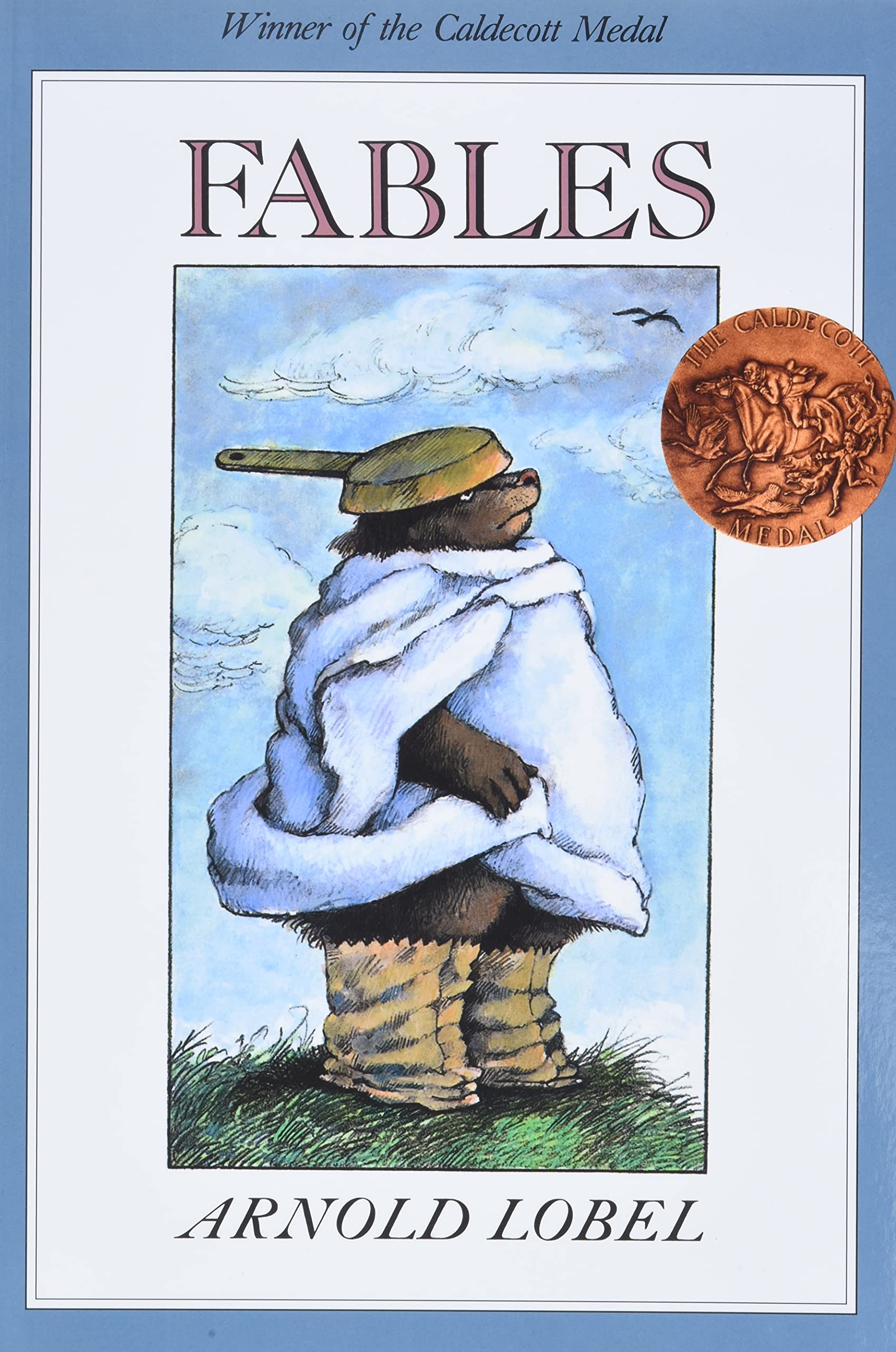 |
| Photo: Amazon.com |
Fables is a children's picture book by American author Arnold Lobel. Released by Harper & Row in 1980, it was the recipient of the Caldecott Medal for illustration in 1981.
For each of the twenty fables Lobel's text occupies one page, with his colour illustration on the facing page. He gives a moral to each, but while the moral is genuine, the tone of the fables is cheerful and playful rather than moralistic. For instance, in the first fable a bed-loving crocodile admires the orderly pattern of flowers on his bedroom wallpaper. When confronted with the riot of flowers in Mrs. Crocodile's garden he retreats to his bed in distress, where he is comforted by the neat floral rows of the wallpaper. After that he seldom leaves his bed, becoming a sickly shade of green. The moral is, "Without a doubt, there is such a thing as too much order."
ALA wrote "Short, original fables with fresh, unexpected morals poke subtle fun at human foibles through the antics of animals. . . . The droll illustrations, with tones blended to luminescent shading, are complete and humorous themselves.", while Kirkus Reviews found "there's not a jot of wit, wisdom, style, or originality in these 20 flat and predictable items. The illustrations ... suffer for having less to illustrate." Horn Book wrote, "the author-illustrator has invented twenty animal fables with an original flavor" and "Each miniature narrative occupies a page by itself and is balanced by a full-page picture which reflects the crucial event of the fable and portrays the joyfully conceived characters." Publishers Weekly called the book "the most remarkable of the author-illustrator's 60-plus, bestselling award winners." In a retrospective essay about the Caldecott Medal-winning books from 1976 to 1985, Barbara Bader wrote that "in Lobel's natural hand, in spontaneous, cartoony sketches or comic stylizations, the work would have had more sparkle and less ponderousness."
5. The Swallows: Short fables with morals for children. (The Swallows Collection) by Christy Astremsky
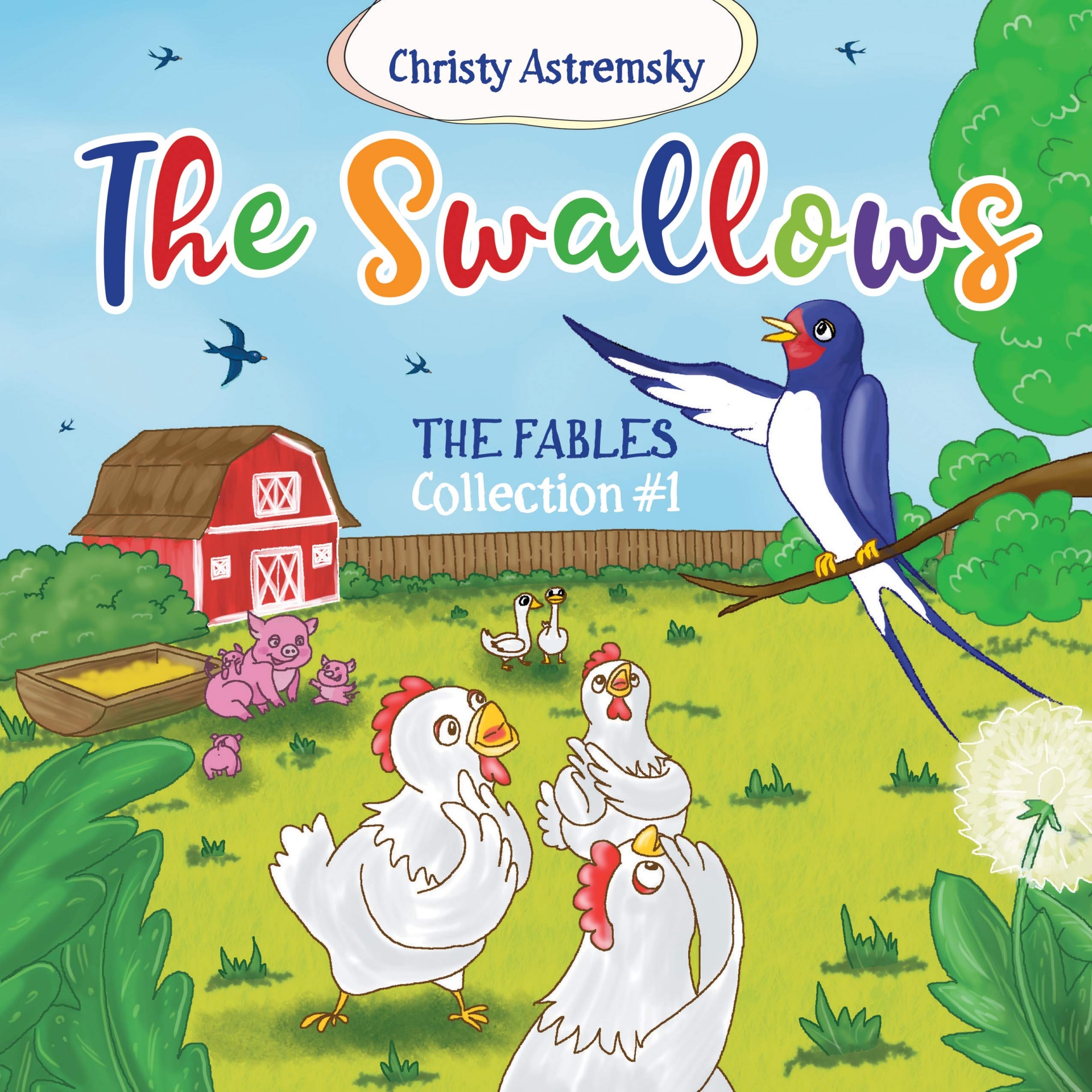 |
| Photo: Goodreads |
Are you looking for short funny poems for your children that will teach them simple life truths?
You are in the right place!
Among the popular fables for children, these are especially noteworthy. Simple texts of this children book are complemented by colorful pictures that will help a child understand the moral of each fable.
You can purchase this children book with Kindle Unlimited.
The Swallows collection includes five fables.
These stories will tell the kids about such virtues as courage, helping others and having confidence in their own abilities.
Also, children will see the results of cowardice and understand why people really fight.
These fables make fun of amateurs who pass judgment on what they don’t really know and incompetent critics who can only condemn others.
Children will learn how important it is to fight back in difficult situations and pursue their goals.
They will meet a cowardly Seagull who stopped flying because he was afraid of hardships; A narrow-minded Hen who does not see beyond its own beak; The Hare – an incompetent carpenter who bragged a lot but was completely inept; The Crow who criticized everybody but made a fool of himself because he had nothing to show for his own work.
Welcome to the world of stories that will help your children do better in life!
6. Friedman’s Fables by Edwin H. Friedman
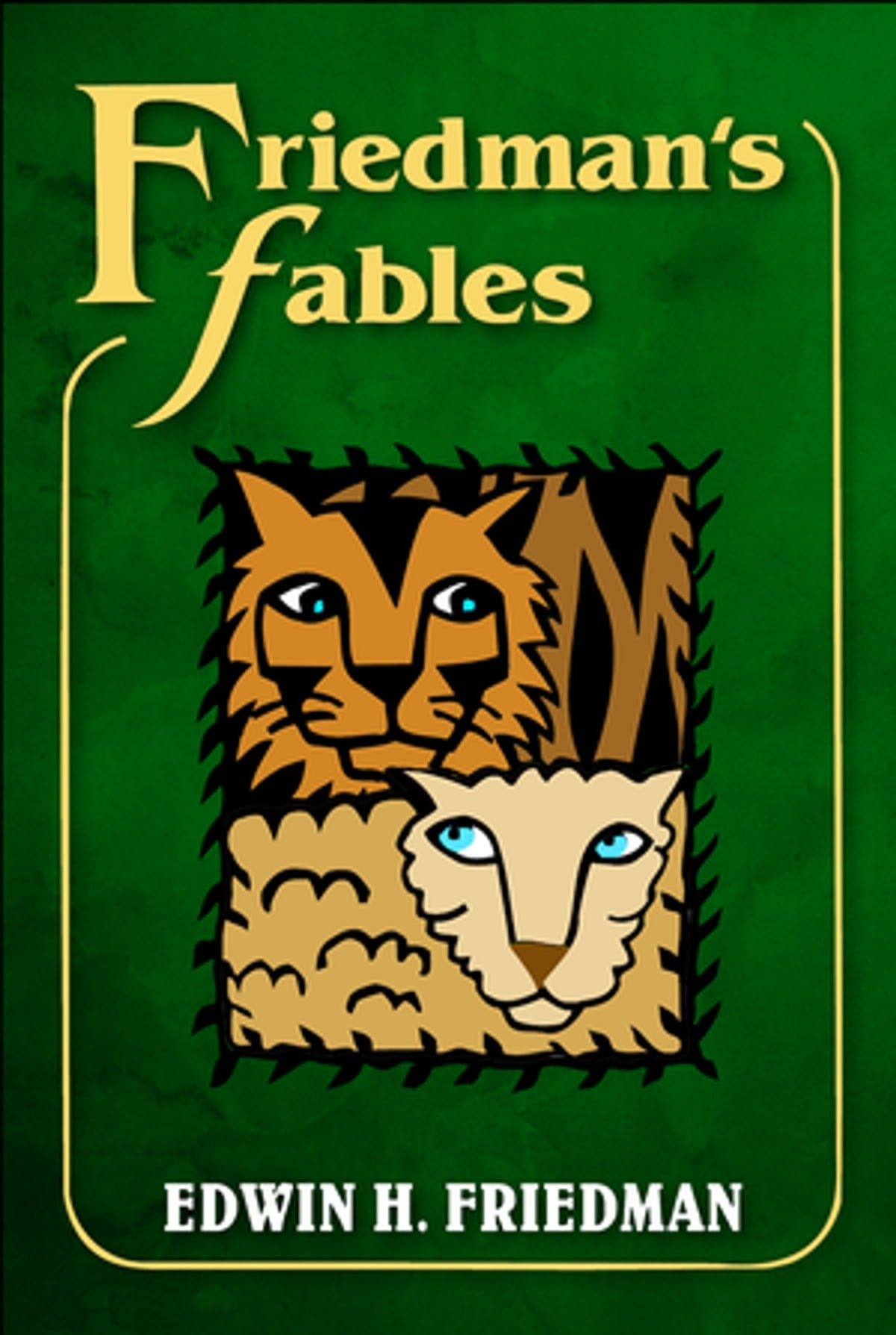 |
| Photo: Kobo.com |
Edwin H. Friedman has woven 24 illustrative tales that offer fresh perspectives on familiar human foibles and reflect the author's humor, pathos, and understanding. Friedman takes on resistance and other "demons" to show that neither insight, nor encouragement, nor intimidation can in themselves motivate an unmotivated person to change. These tales playfully demonstrate that new ideas, new questions, and imagination, more than accepted wisdom, provide each of us with the keys to overcoming stubborn emotional barriers and facilitating real change both in ourselves and others. Thought-provoking discussion questions for each fable are included.
These tales playfully demonstrate that new ideas, new questions, and imagination, more than accepted wisdom, provide each of us with the keys to overcoming stubborn emotional barriers and facilitating real change both in ourselves and others. Thought-provoking discussion questions for each fable can be downloaded and printed in a convenient 8½“ x 11” size.
“The book had an unexpected effect. I found myself more creative in the therapy sessions that followed, almost as if I had been granted some internal form of permission to co-create a story alongside the stuck stories of so many of my clients....The stories...had, in effect, stimulated my own story-telling ability.”
—AFTA Newsletter
“I used a fable for my sermon, and you could have heard a pin drop by the end....I find the fables thoroughly delightful and powerful.”
—The Rev. Henry C. Galganowicz, Rector, Emmanuel Episcopal Church, Weston, Connecticut
7. The Black Sheep by Augusto Monterroso
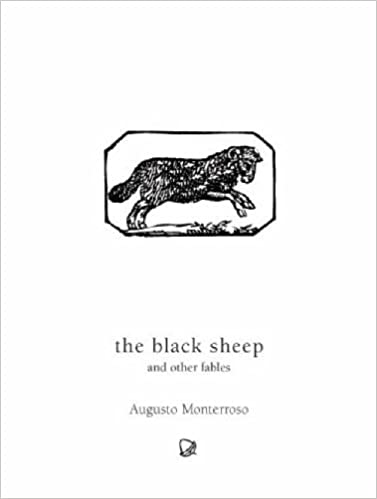 |
| Photo: Amazon.com |
This small volume of extremely short fables -- many only a page or a few paragraphs in length -- is a virtuoso display of writing. These precise little pieces are not traditional fables. Monterroso cuts the form down to its barest essence, revealing the complexity of the underlying morals that are usually foisted on a reader. These are not edifying tales as we are used to, but they are beautiful, clever, and honest little works.
In one of the most stunning examples, Monterroso manages in three paragraphs -- a mere eight lines (seven here) -- to present a succinct version of the well-known race in "The Tortoise and Achilles", reducing one of Borges' favourite paradoxes to such a simple and yet equally resonant form:
Finally, according to the cable, last week the Tortoise arrived at the finish line.
At the press conference he declared modestly that all along he had feared that he was going to lose, since his competitor was right on his heels.
As it happened, one ten thousand trillionth of a second later, like an arrow and cursing Zeno of Elea, Achilles crossed the line.
It is the perfect complement to Borges' meditations on the subject, and a perfect fable in its own right.
Many of the other fables also impress. Of particular note is "Faith and the Mountains", a beautiful story on the power of faith -- and the dangers it poses. Here as elsewhere Monterroso neatly turns expectations and conventional takes on a subject and turns them on their head, daring to suggest, for example, that Faith is not benign and that it can bring with it great and grave consequences.
Similarly, he offers an entirely new explanation of Ulysses' journeys in "The Cloth of Penelope -- or Who deceives Whom ?" Other stories of note include the marvelous title piece, "The Fly who dreamed he was an Eagle", and "The Monkey who wanted to be a Satirical Writer" -- though, really, the whole slim collection is impressive.
Clever, amusing, and thoughtful, with nary a wasted word, Monterroso's small pieces are weightier than many a full-sized novel. Neatly presented in this long out of print volume, with woodcuts facing the text to pad the book, The Black Sheep is an excellent collection. Because of the precision of the texts quite a bit gets lost in translation. Nevertheless, even in English it is a marvelous read. Highly recommended.
8. The McElderry Book of Aesop's Fables
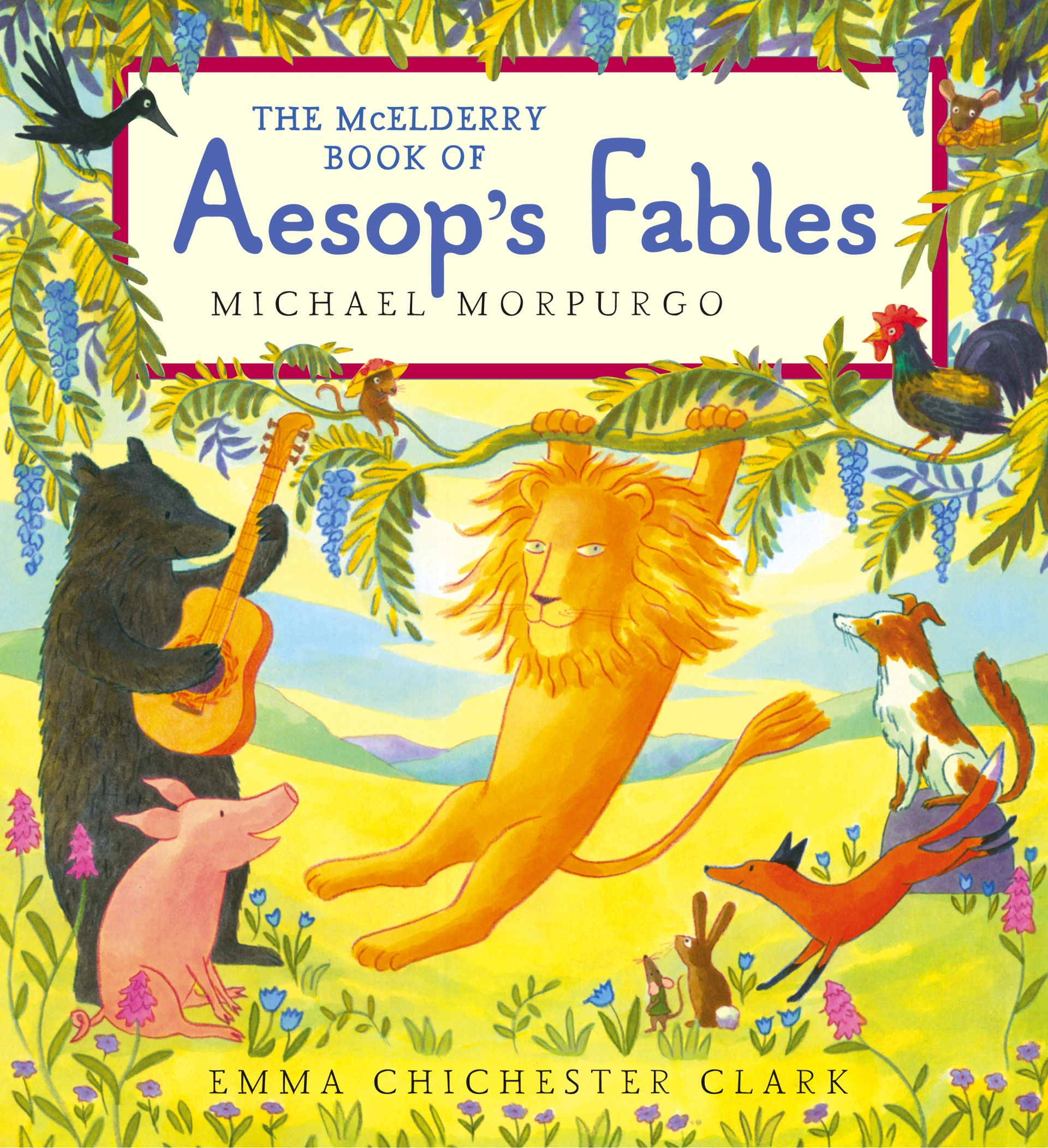 |
| Photo: Simon & Schuster |
Ancient Aesop swings into the twenty-first century in this bright new collection of twenty-one favorite fables. Here are all the classic tales: the greedy dog who loses his bone to his own reflection in the water; the little mouse who pays back the grand lion in a big, big way; and the shepherd's son who thinks it's a good joke to cry "Wolf!" just to see the villagers come running. And, of course, there's that arrogant hare and his racing partner, the slow but steady tortoise.
Michael Morpurgo's lively language gives each tale a fresh feel that's perfect for reading aloud and sharing. Emma Chichester Clark's radiant illustrations are bursting with bold colors and cheerful characters. Together they have created a modern classic brimming with fun, which children will enjoy reading and laughing over again and again.
Michael Morpurgo is the children's laureate of Britain. He has written over ninety-five books and won numerous awards, including the Whitbread Award, the Smarties Prize, and the Children's Book Award. Michael and his wife, Clare, run their own charity, Farms for City Children, from their farm in Devon, England.
9. Squids Will Be Squids by Jon Scieszka and Lane Smith
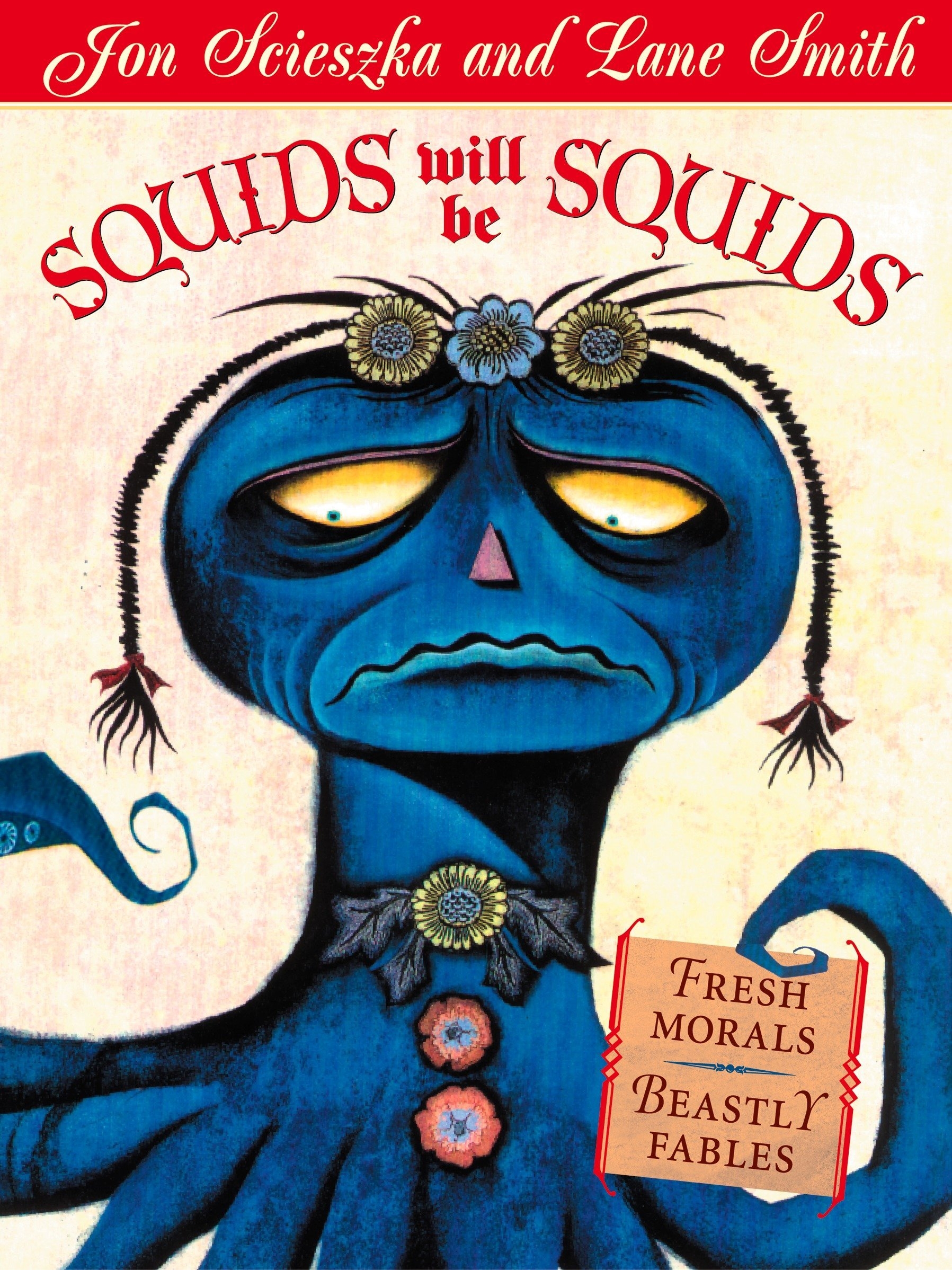 |
| Photo: Amazon.com |
Scieszka and Smith, creators of The True Story of the Three Little Pigs and The Stinky Cheese Man and Other Fairly Stupid Tales, turn their attention away from fairy tales to reinvent the fable, thinly disguising sage bits of advice as pithy morals. Foxes and grapes are too pedestrian for these veteran absurdists, who tackle boastfulness in ""Duckbilled Platypus vs. BeefSnakStikR"" and who denounce vanity in the story of a skateboarding frog. Unusual characters notwithstanding, each piece highlights an everyday, modern situation in the manner of Aesop's classics. Topics in these 18 tales hit the bull's-eye, running the gamut from the toxic clique (Shark, Wasp and Bacteria wonder why no one eats lunch at their table; ""Moral: Think about it"") to the dynamics of a group project (Rock, Scissors and Paper all blame one another for their bad grade; ""Moral: Shoot"") to handling friends and family. In ""Termite, Ant, & Echidna,"" for instance, foolish Ant throws aside his best friend when he meets a new playground pal, realizing too late that ""Echidna is another name for Spiny Anteater."" Scieszka ventures deep into child appeal territory, as in a gas-passing anecdote about a skunk, musk ox and cabbage (""Moral: He who smelt it, dealt it""). Smith ardently keeps pace with Scieszka's leaps of fancy, lending credence to a talking piece of toast, a walrus with a phone and a spiny, spiteful blowfish. In one full-bleed painting, little green Grasshopper cowers in the giant shadow of his mother as she grills him about his homework; strokes of eggplant-colored paint extend the sweeping size of her tentacle-like appendages, while splatters of softer shades suggest the sweat from her brow. In another, the titular fable, Smith utilizes a cartoon-like progression of panels to contrast the animated expressions of Deer, Mouse and Rabbit as they enthusiastically attempt to plan an outing with that of the deadpan, naysayer Squid. Meanwhile the design, with text printed in three typefaces of multiple sizes and colors, drives home each moral. The oversize format allows for a variety of page layouts, not to mention an in-your-face attitude that will hold readers' rapt attention. Unlike Paul and Marc Rosenthal's satiric effort in Yo, Aesop! Get a Load of These Fables (Children's Forecasts, Mar. 23), this crafty volume pays tribute to the original fables' economy and moral intent. Scieszka and Smith thriftily present one tale per spread, and beneath this duo's playful eccentricity readers will discover some powerful insights into human nature. Ages 7-9.
10. Grimms' Fairy Tales
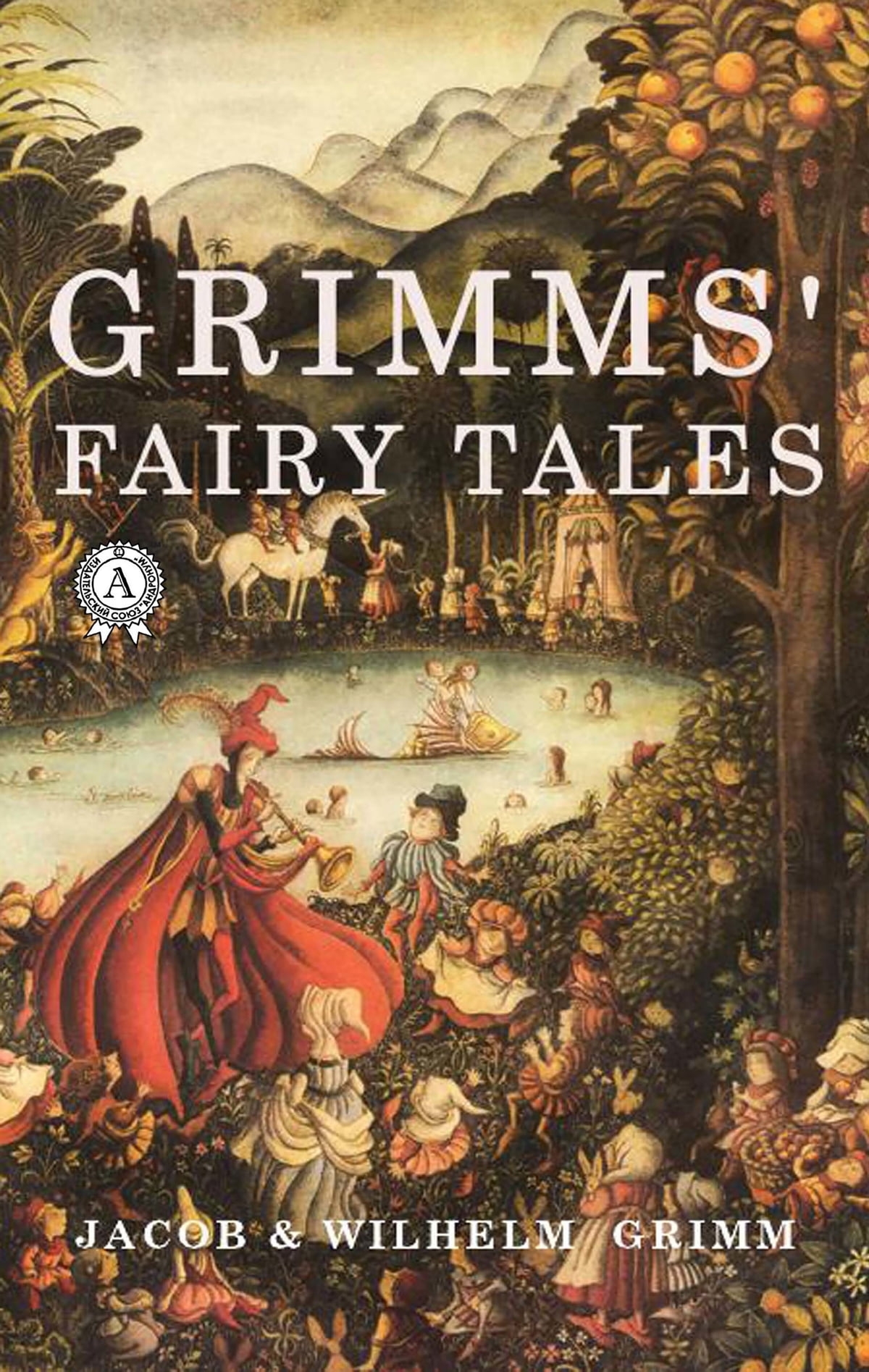 |
| Photo: Kobo.com |
Grimms' Fairy Tales, originally known as the Children's and Household Tales (German: Kinder- und Hausmärchen), is a German collection of fairy tales by the Grimm brothers or "Brothers Grimm", Jacob and Wilhelm, first published on 20 December 1812. This first edition contained 86 stories, and by the seventh edition in 1857, it had 210 unique fairy tales. It is listed by UNESCO in its Memory of the World Registry.
Jacob and Wilhelm Grimm were two of 10 children from Dorothea (née Zimmer) and Philipp Wilhelm Grimm. Philipp was a highly regarded district magistrate in Steinau an der Straße, about 50 km from Hanau. Jacob and Wilhelm were sent to school for a classical education once they were of age, while their father was working. They were very hard-working pupils throughout their education. They followed in their father's footsteps and started to pursue a degree in law, and German history. However, in 1796, their father died at the age of 44 from pneumonia. This was a tragic time for the Grimms because the family lost all financial support and relied on their aunt, Henriette Zimmer, and grandfather, Johann Hermann Zimmer. At the age of 11, Jacob was compelled to be head of the household and provide for his family. After downsizing their home because of financial reasons, Henriette sent Jacob and Wilhelm to study at the prestigious high school, Lyzeum, in Kassel. In school, their grandfather wrote to them saying that because of their current situation, they needed to apply themselves industriously to secure their future welfare.
Shortly after attending Lyzeum, their grandfather died and they were again left to themselves to support their family in the future. The two became intent on becoming the best students at Lyzeum, since they wanted to live up to their deceased father. They studied more than twelve hours a day and established similar work habits. They also shared the same bed and room at school. After four years of rigorous schooling, Jacob graduated head of his class in 1802. Wilhelm contracted asthma and scarlet fever, which delayed his graduation by one year although he was also head of his class. Both were given special dispensations for studying law at the University of Marburg. They particularly needed this dispensation because their social standing at the time was not high enough to have normal admittance. University of Marburg was a small, 200-person university where most students were more interested in activities other than schooling. Most of the students received stipends even though they were the richest in the state. The Grimms did not receive any stipends because of their social standing; however, they were not upset by it since it kept the distractions away.
11. Beneath the Moon: Fairy Tales, Myths, and Divine Stories from Around the World
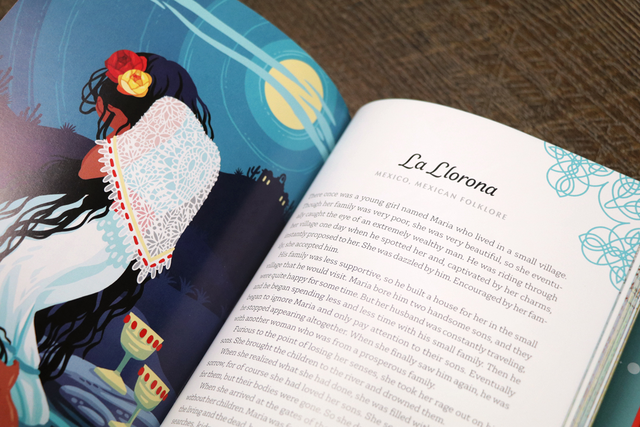 |
| Photo: Fully Booked |
Powerful and universal retellings of seventy-eight divine stories, legends, and myths from around the world, each accompanied by a gorgeous illustration from acclaimed artist Yoshi Yoshitani.
Many of the lessons we learn are shared stories passed among cultures and generations. In this riveting collection of fables and folktales from cultures across the globe, characters from beloved fairytales, cultural fables, ancient mythologies, and inspirational deities are brought to life, including Sleeping Beauty (Italy), Rapunzel (Germany), Jack and the Beanstalk (England), Our Lady of Guadalupe (Mexico), Sun God Ra (Egypt), the Crane Wife (Japan), and dozens more.
Lesser-known stories introduce characters such as the volcano goddess Pele from Hawaii; Mwindo, the wise and powerful king of the Nyanga people; and the strong and resilient Yennenga, mother of the Mossi people in Burkina Faso. The recurring themes of conquering evil, overcoming adversity, and finding love and companionship are woven throughout this collection.
Yoshi Yoshitani's art style is fresh and unique, featuring diverse and multicultural characters. Each story will be featured opposite a correlating illustration, both lush and vibrant.
12. The Tale of Two Bad Mice, by Beatrix Potter
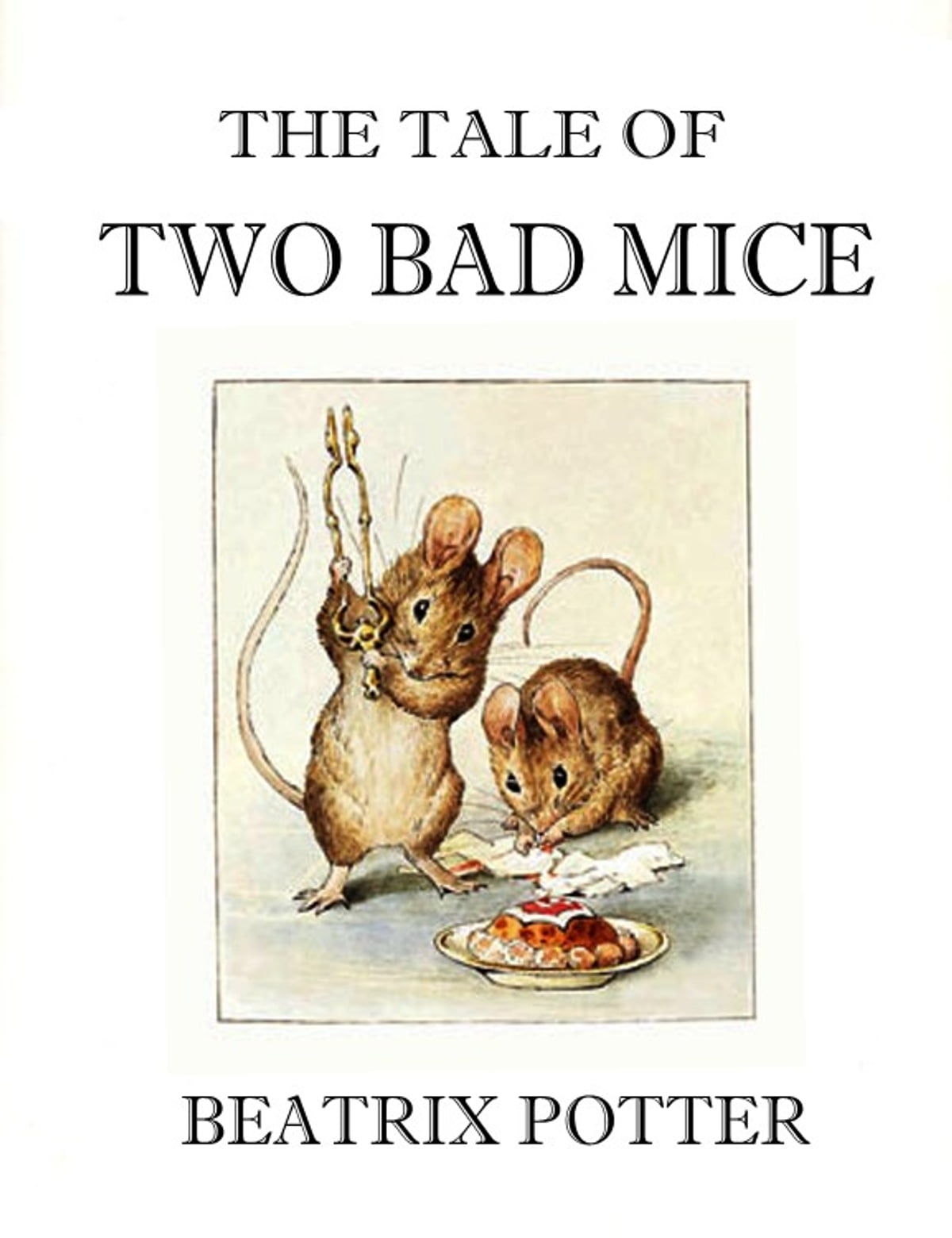 |
| Photo: Kobo.com |
The Tale of Two Bad Mice is a children's book written and illustrated by Beatrix Potter, and published by Frederick Warne & Co. in September 1904. Potter took inspiration for the tale from two mice caught in a cage-trap in her cousin's home and a doll's house being constructed by her editor and publisher Norman Warne as a Christmas gift for his niece Winifred. While the tale was being developed, Potter and Warne fell in love and became engaged, much to the annoyance of Potter's parents, who were grooming their daughter to be a permanent resident and housekeeper in their London home.
The tale is about two mice who vandalize a doll's house. After finding the food on the dining room table made of plaster, they smash the dishes, throw the doll clothing out the window, tear the bolster, and carry off a number of articles to their mouse-hole. When the little girl who owns the doll's house discovers the destruction, she positions a policeman doll outside the front door to ward off any future depredation. The two mice atone for their crime spree by putting a crooked sixpence in the doll's stocking on Christmas Eve and sweeping the house every morning with a dust-pan and broom.
The tale's themes of rebellion, insurrection, and individualism reflect not only Potter's desire to free herself of her domineering parents and build a home of her own, but her fears about independence and her frustrations with Victorian domesticity.
The book was critically well received and brought Potter her first fan letter from America. The tale was adapted to a segment in the 1971 Royal Ballet film The Tales of Beatrix Potter and to an animated episode in the BBC series The World of Peter Rabbit and Friends. Merchandise inspired by the tale includes Beswick Pottery porcelain figurines and Schmid music boxes.
The tale begins with "once upon a time" and a description of a "very beautiful doll's-house" belonging to a doll called Lucinda and her cook-doll Jane. Jane never cooks because the doll's-house food is made of plaster and was "bought ready-made, in a box full of shavings". Though the food will not come off the plates, it is "extremely beautiful".
One morning the dolls leave the nursery for a drive in their perambulator. No one is in the nursery when Tom Thumb and Hunca Munca, two mice living under the skirting board, peep out and cross the hearthrug to the doll's-house. They open the door, enter, and "squeak for joy" when they discover the dining table set for dinner. It is "all so convenient!" Tom Thumb discovers the food is plaster and loses his temper. The two smash every dish on the table – "bang, bang, smash, smash!" – and even try to burn one in the "red-hot crinkly paper fire" in the kitchen fireplace.
Tom Thumb scurries up the sootless chimney while Hunca Munca empties the kitchen canisters of their red and blue beads. Tom Thumb takes the dolls' dresses from the chest of drawers and tosses them out the window while Hunca Munca pulls the feathers from the dolls' bolster. In the midst of her mischief, Hunca Munca remembers she needs a bolster and the two take the dolls' bolster to their mouse-hole. They carry off several small odds and ends from the doll's-house including a cradle, however a bird cage and bookcase will not fit through the mouse-hole. The nursery door suddenly opens and the dolls return in their perambulator.
Lucinda and Jane are speechless when they behold the vandalism in their house. The little girl who owns the doll's-house gets a policeman doll and positions it at the front door, but her nurse is more practical and sets a mouse-trap. The narrator believes the mice are not "so very naughty after all": Tom Thumb pays for his crimes with a crooked sixpence placed in the doll's stocking on Christmas Eve and Hunca Munca atones for her hand in the destruction by sweeping the doll's-house every morning with her dust-pan and broom.
13. The Story of the Three Little Pigs, by Frederick Warne
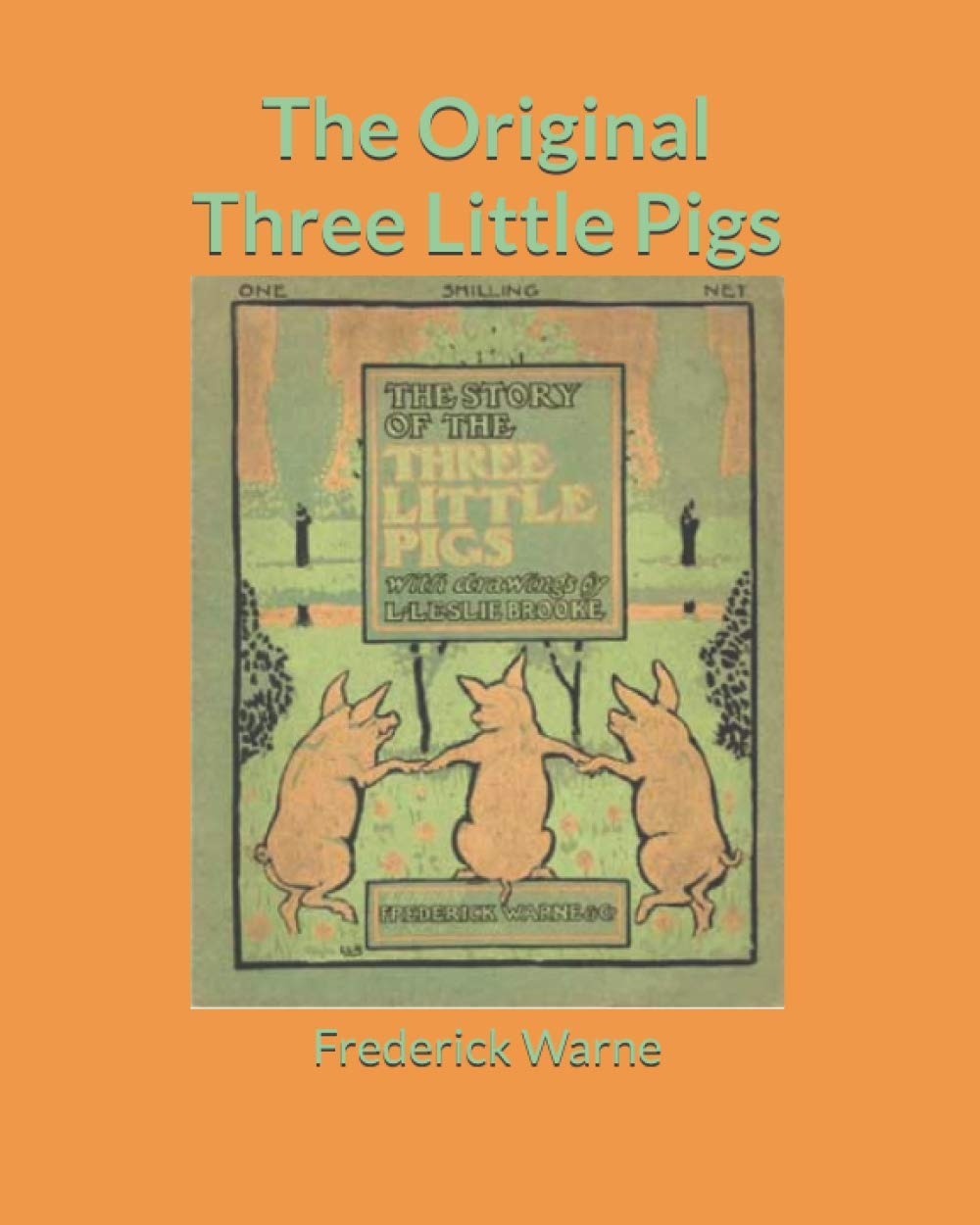 |
| Photo: Amazon.com |
The Story of the Three Little Pigs by L. Leslie Brooke is the story of the three pigs that are sent out by their mother to seek their fortune. The first makes his house out of straw, but the big bad wolf comes and blows it down and gobbles the pig up. The second pig builds his house out of furze, but once again the wolf blows down the house and eats the pig. But when the wolf gets to the 3rd pigs house, he is unable to blow the house down because it is made of bricks. The wolf tries to trick the pig into coming out of his house to eat the pig. But the pig is the one who tricks the wolf.
In the story the repetition of "I'll huff and I'll puff, and I'll blow your house in!" helps to foreshadow and allow the reader to know what is happening. Except for the third pig, you think that the wolf will eat the pig, but he does not. The illustrations help to add amusement to the story when the third pig is playing tricks on the wolf.
Book Reviews:
I’ve always loved this version of “The Three Little Pigs,” as told by the Wolf. The narrating wolf (who you’re free to not believe) claims to have been a victim of a bad cold and some very rude swine. It’s a clever and funny approach with wonderfully unique artwork.
-Amazon Reviewer
An old story told from a different perspective. I liked it when my kids were younger and hope the grandkids will, too.
-Amazon Reviewer
14. The Book of Greek and Roman Folktales, Legends, and Myths
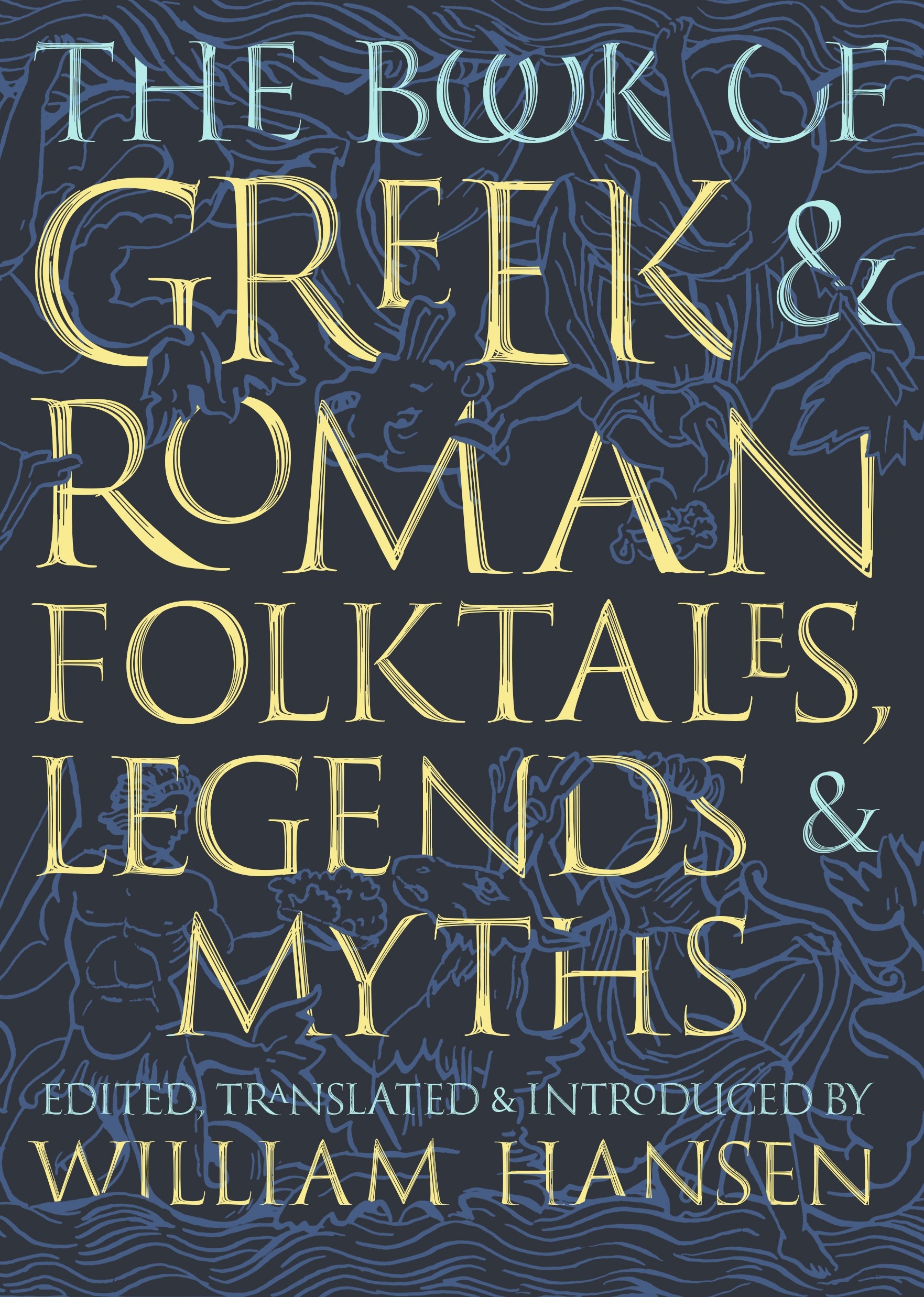 |
| Photo: Amazon.com |
The first anthology ever to present the entire range of ancient Greek and Roman stories―from myths and fairy tales to jokes
Captured centaurs and satyrs, talking animals, people who suddenly change sex, men who give birth, the temporarily insane and the permanently thick-witted, delicate sensualists, incompetent seers, a woman who remembers too much, a man who cannot laugh―these are just some of the colorful characters who feature in the unforgettable stories that ancient Greeks and Romans told in their daily lives. Together they created an incredibly rich body of popular oral stories that include, but range well beyond, mythology―from heroic legends, fairy tales, and fables to ghost stories, urban legends, and jokes. This unique anthology presents the largest collection of these tales ever assembled. Featuring nearly four hundred stories in authoritative and highly readable translations, this is the first book to offer a representative selection of the entire range of traditional classical storytelling.
Set mostly in the world of humans, not gods, these stories focus on figures such as lovers, tricksters, philosophers, merchants, rulers, athletes, artists, and soldiers. The narratives range from the well-known―for example, Cupid and Psyche, Diogenes and his lantern, and the tortoise and the hare―to lesser-known tales that deserve wider attention. Entertaining and fascinating, they offer a unique window into the fantasies, anxieties, humor, and passions of the people who told them.
Complete with beautiful illustrations by Glynnis Fawkes, a comprehensive introduction, notes, and more, this one-of-a-kind anthology will delight general readers as well as students of classics, fairy tales, and folklore.
15. The Collected Fables of Ambrose Bierce
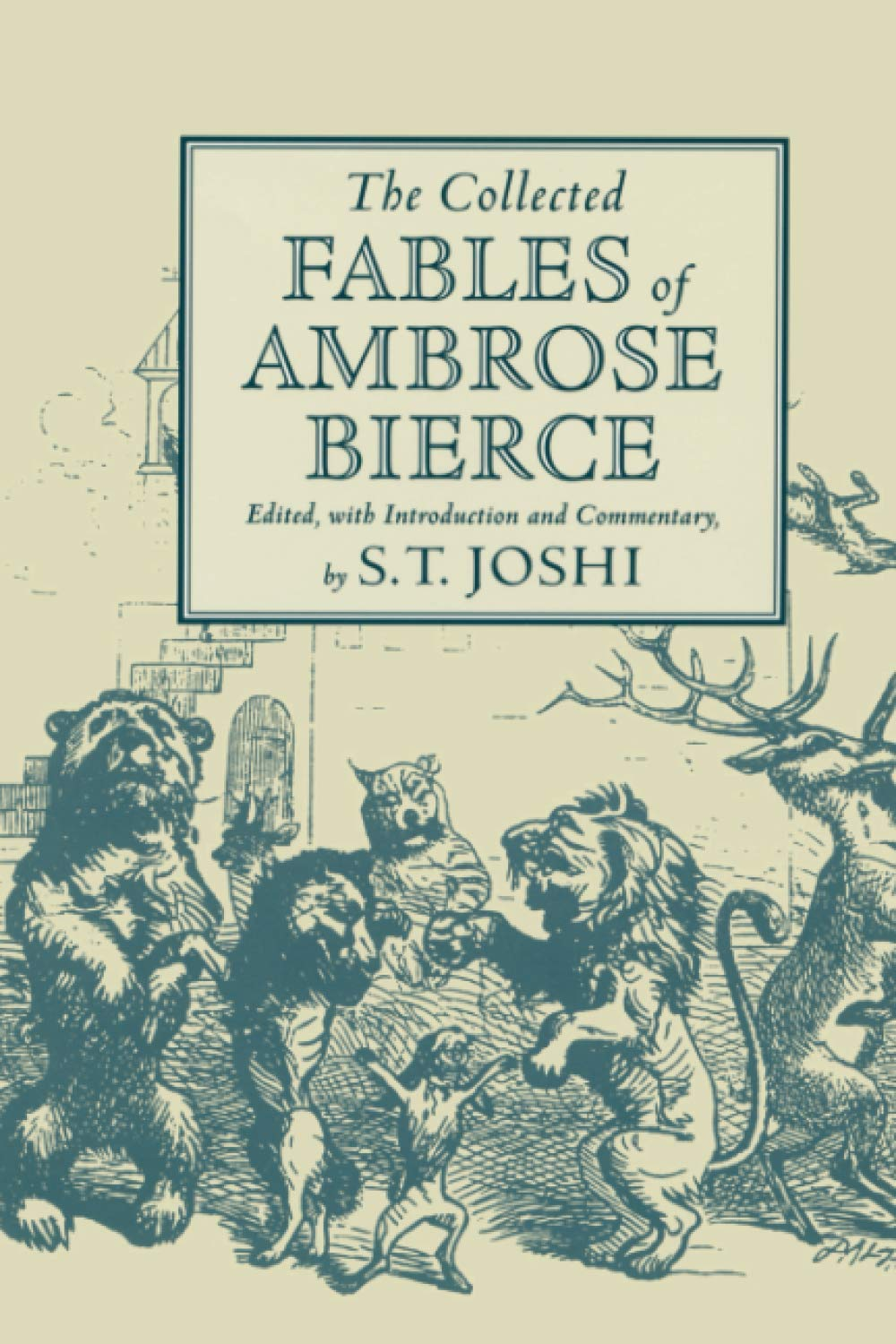 |
| Photo: Amazon.com |
Ambrose Bierce was a well-known and highly admired journalist, short story writer, and satirist. After distinguished Civil War service, Bierce became a journalist, and in 1887 he became a columnist for William Randolph Hearst’s Sunday Examiner. His work for the San Francisco Examiner made his reputation, especially on the West Coast. In 1914 he vanished on a trip to Mexico.
The work for which he is best know, The Devil’s Dictionary, was first published in 1906. Bierce also published volumes of short stories. His Tales of Soldiers and Civilians (1891) represents some of the finest writing to come out of the Civil War. Bierce’s stories of the supernatural, collected in Can Such Things Be? (1893), established him as one of the leading American authors of supernatural fiction.
This volume gathers together for the first time the 850 fables written by Bierce over his forty-year career, including more than 400 fables never reprinted from the magazines and newspapers in which they originally appeared.
Bierce’s fables are distinguished for their biting wit and their cynical reflection of the political and social events of his time. Local and national political figures; corrupt lawyers, judges, and clergymen; and even incidents in the Spanish-American War are all mercilessly lampooned. The fables not only testify to Bierce’s hatred of “hypocrisy, cant, and all sham” but provide a window into late nineteenth-century American society. S. T. Joshi has provided extensive commentary explaining historical and literary references in the fables.
16. Just So Stories by Rudyard Kipling
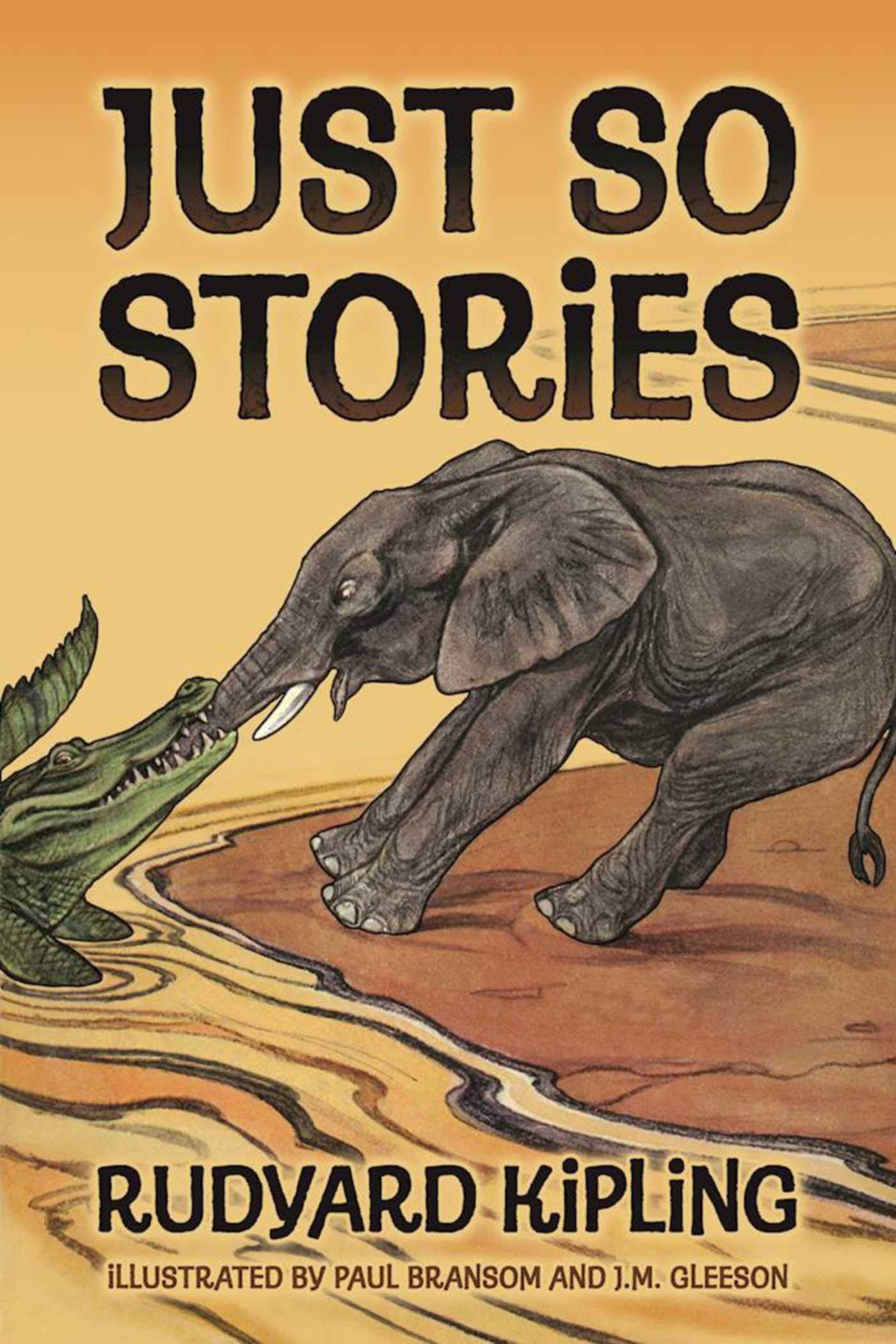 |
| Photo: Amazon.com |
Just So Stories for Little Children is a 1902 collection of origin stories by the British author Rudyard Kipling. Considered a classic of children's literature, the book is among Kipling's best known works.
Kipling began working on the book by telling the first three chapters as bedtime stories to his daughter Josephine. These had to be told "just so" (exactly in the words she was used to) or she would complain. The stories illustrate how animals obtained their distinctive features, such as how the leopard got his spots. For the book, Kipling illustrated the stories himself.
The stories have appeared in a variety of adaptations including a musical and animated films. Evolutionary biologists have noted that what Kipling did in fiction in a Lamarckian way, they have done in reality, providing Darwinian explanations for the evolutionary development of animal features.
The Just So Stories began as bedtime stories told by Kipling to his daughter "Effie" (Josephine, Kipling's firstborn); when the first three were published in a children's magazine, a year before her death, Kipling explained: "in the evening there were stories meant to put Effie to sleep, and you were not allowed to alter those by one single little word. They had to be told just so; or Effie would wake up and put back the missing sentence. So at last they came to be like charms, all three of them – the whale tale, the camel tale, and the rhinoceros tale."
(The name Effie does not appear in the text of the stories, where the narrator now and again says O my Best Beloved to his listening child instead.)
Nine of the thirteen Just So Stories tell how particular animals were modified from their original forms to their current forms by the acts of human beings or magical beings. For example, the Whale has a tiny throat because he swallowed a mariner, who tied a raft inside to block the whale from swallowing other men. The Camel has a hump given to him by a djinn as punishment for the camel's refusing to work (the hump allows the camel to work longer between times of eating). The Leopard's spots were painted by an Ethiopian (after the Ethiopian painted himself black). The Kangaroo gets its powerful hind legs, long tail and hopping gait after being chased all day by a dingo, sent by a minor god responding to the Kangaroo's request to be made different from all other animals.
17. Andersen's Classic Tales by Hans Christian Andersen
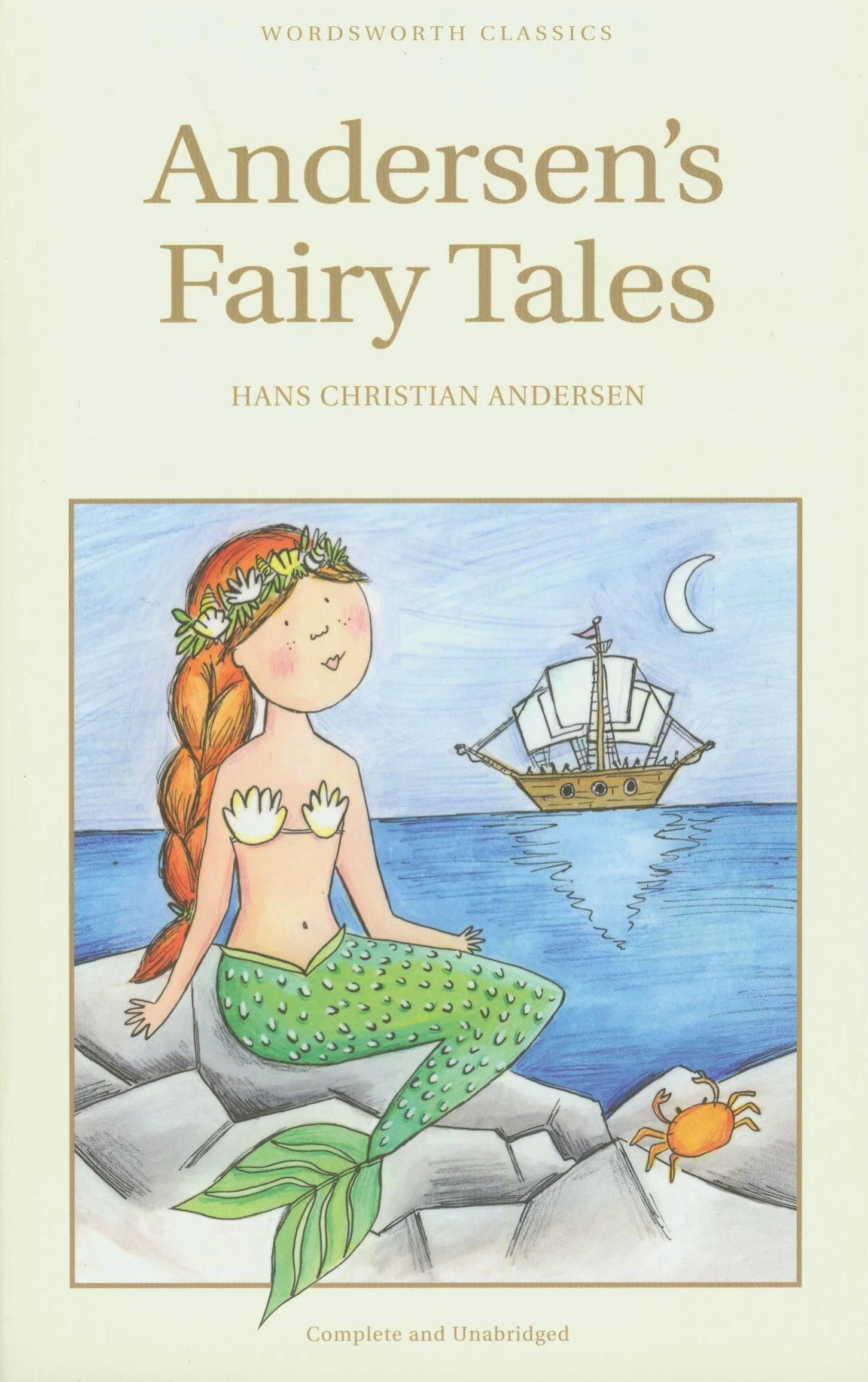 |
| Photo: Amazon.com |
This work has been selected by scholars as being culturally important, and is part of the knowledge base of civilization as we know it. This work was reproduced from the original artifact, and remains as true to the original work as possible. Therefore, you will see the original copyright references, library stamps (as most of these works have been housed in our most important libraries around the world), and other notations in the work.
This work is in the public domain in the United States of America, and possibly other nations. Within the United States, you may freely copy and distribute this work, as no entity (individual or corporate) has a copyright on the body of the work.
As a reproduction of a historical artifact, this work may contain missing or blurred pages, poor pictures, errant marks, etc. Scholars believe, and we concur, that this work is important enough to be preserved, reproduced, and made generally available to the public. We appreciate your support of the preservation process, and thank you for being an important part of keeping this knowledge alive and relevant.
18. The Fate of Fausto by Oliver Jeffers
 |
| Photo: Amazon.com |
The Fate of Fausto: A Painted Fable is a 2019 children's picture book written and illustrated by Oliver Jeffers. Inspired by the German legend of Faust, the book follows the arrogant titular character Fausto, who wants to own every natural worldly possession. It addresses themes of greed, colonialism, power, and environmentalism.
The pages were illustrated using traditional lithographic printmaking techniques, making use of coloured-pencil style figures and saturated shades over expanses of white spaces. Reviewers praised the book for its sparse narrative, illustrations and appeal to the audience. The book featured on the year-end lists by publications such as The Guardian and Time.
The Fate of Fausto tells the story of a balding, moustached man named Fausto, who has a nose-in air posture and wears a three-piece suit. Demanding and selfish, Fausto believes that he owns every natural possession in the world that he sees around himself. Pointing to the sheep, the flower, a tree, and a lake, he declares "You are mine". He then approaches a mountain where he stamps his foot and intimidates it quickly. However, Fausto's greed has no end. Catching sight of the sea, the insatiable Fausto sets out on a boat in an attempt to assert ownership of it, only to find that excessive greed leads to one's own downfall.
19. The Little Prince by Antoine de Saint-Exupéry
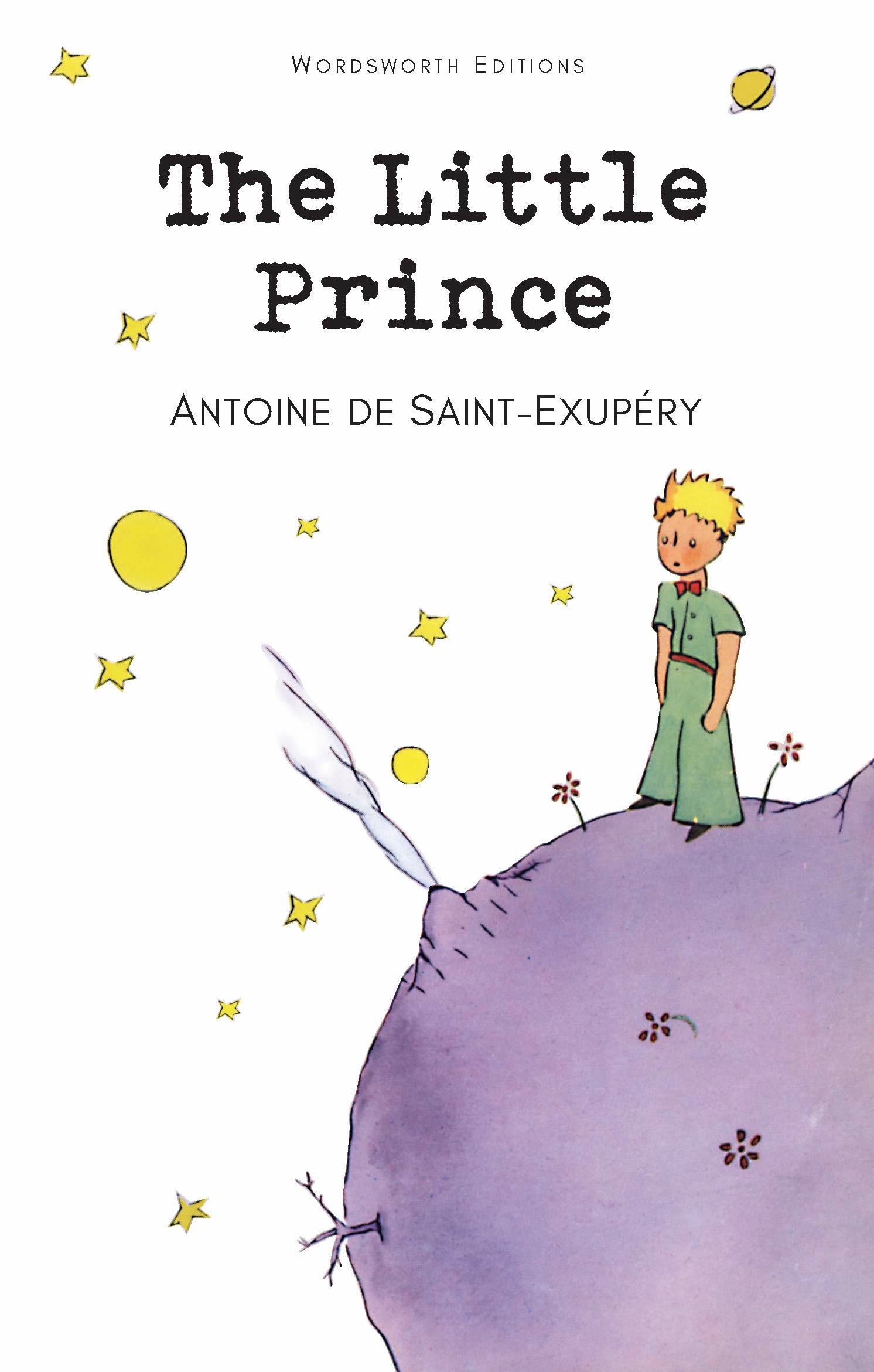 |
| Photo: Wordsworth Editions |
The Little Prince (French: Le Petit Prince) is a novella by French aristocrat, writer, and military aviator Antoine de Saint-Exupéry. It was first published in English and French in the United States by Reynal & Hitchcock in April 1943 and was published posthumously in France following liberation; Saint-Exupéry's works had been banned by the Vichy Regime. The story follows a young prince who visits various planets in space, including Earth, and addresses themes of loneliness, friendship, love, and loss. Despite its style as a children's book, The Little Prince makes observations about life, adults and human nature.
The Little Prince became Saint-Exupéry's most successful work, selling an estimated 140 million copies worldwide, which makes it one of the best-selling and most translated books ever published. It has been translated into over 301 languages and dialects. The Little Prince has been adapted to numerous art forms and media, including audio recordings, radio plays, live stage, film, television, ballet, and opera.
The story of The Little Prince is recalled in a sombre, measured tone by the pilot-narrator, in memory of his small friend, "a memorial to the prince—not just to the prince, but also to the time the prince and the narrator had together." The Little Prince was created when Saint-Exupéry was "an ex-patriate and distraught about what was going on in his country and in the world." According to one analysis, "the story of the Little Prince features a lot of fantastical, unrealistic elements.... You can't ride a flock of birds to another planet... The fantasy of the Little Prince works because the logic of the story is based on the imagination of children, rather than the strict realism of adults."
An exquisite literary perfectionist, akin to the 19th century French poet Stéphane Mallarmé, Saint-Exupéry produced draft pages "covered with fine lines of handwriting, much of it painstakingly crossed out, with one word left standing where there were a hundred words, one sentence substitut[ing] for a page..." He worked "long hours with great concentration." According to the author himself, it was extremely difficult to start his creative writing processes. Biographer Paul Webster wrote of the aviator-author's style: "Behind Saint-Exupéry's quest for perfection was a laborious process of editing and rewriting which reduced original drafts by as much as two-thirds." The French author frequently wrote at night, usually starting at about 11 p.m. accompanied by a tray of strong black coffee. In 1942 Saint-Exupéry related to his American English teacher, Adèle Breaux, that at such a time of night he felt "free" and able to concentrate, "writing for hours without feeling tired or sleepy", until he instantaneously dozed off. He would wake up later, in daylight, still at his desk, with his head on his arms. Saint-Exupéry stated it was the only way he could work, as once he started a writing project it became an obsession.
Although Saint-Exupéry was a master of the French language, he was never able to achieve anything more than haltingly poor English. Adèle Breaux, his young Northport English tutor to whom he later dedicated a writing ("For Miss Adèle Breaux, who so gently guided me in the mysteries of the English language") related her experiences with her famous student as Saint-Exupéry in America, 1942–1943: A Memoir, published in 1971.
20. The complete tales of Uncle Remus by Joel Chandler Harris
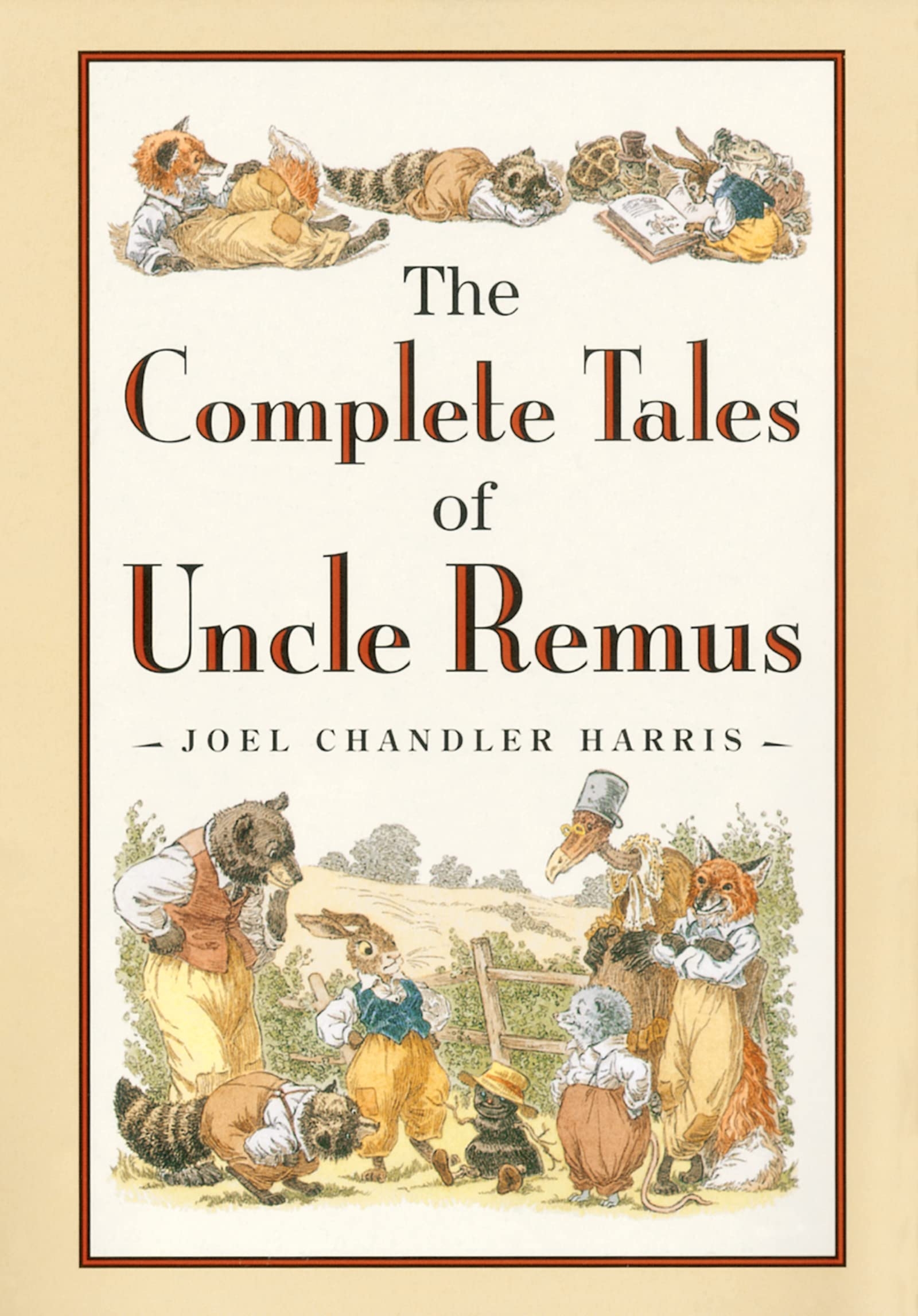 |
| Photo: Amazon UK |
A classic book compiling the complete tales from eight books, with the original illustrations.
It’s been more than a hundred years since the publication of the first Uncle Remus book, and it was in 1955 that all of the delightful and inimitable tales of Brer Rabbit, Brer Fox, Brer Bear, and Brer Wolf were gathered together in one volume. All of the animal tales from eight books are here, along with the illustrations which originally accompanied them.
Any fan of folklore and mythology will treasure this edition.
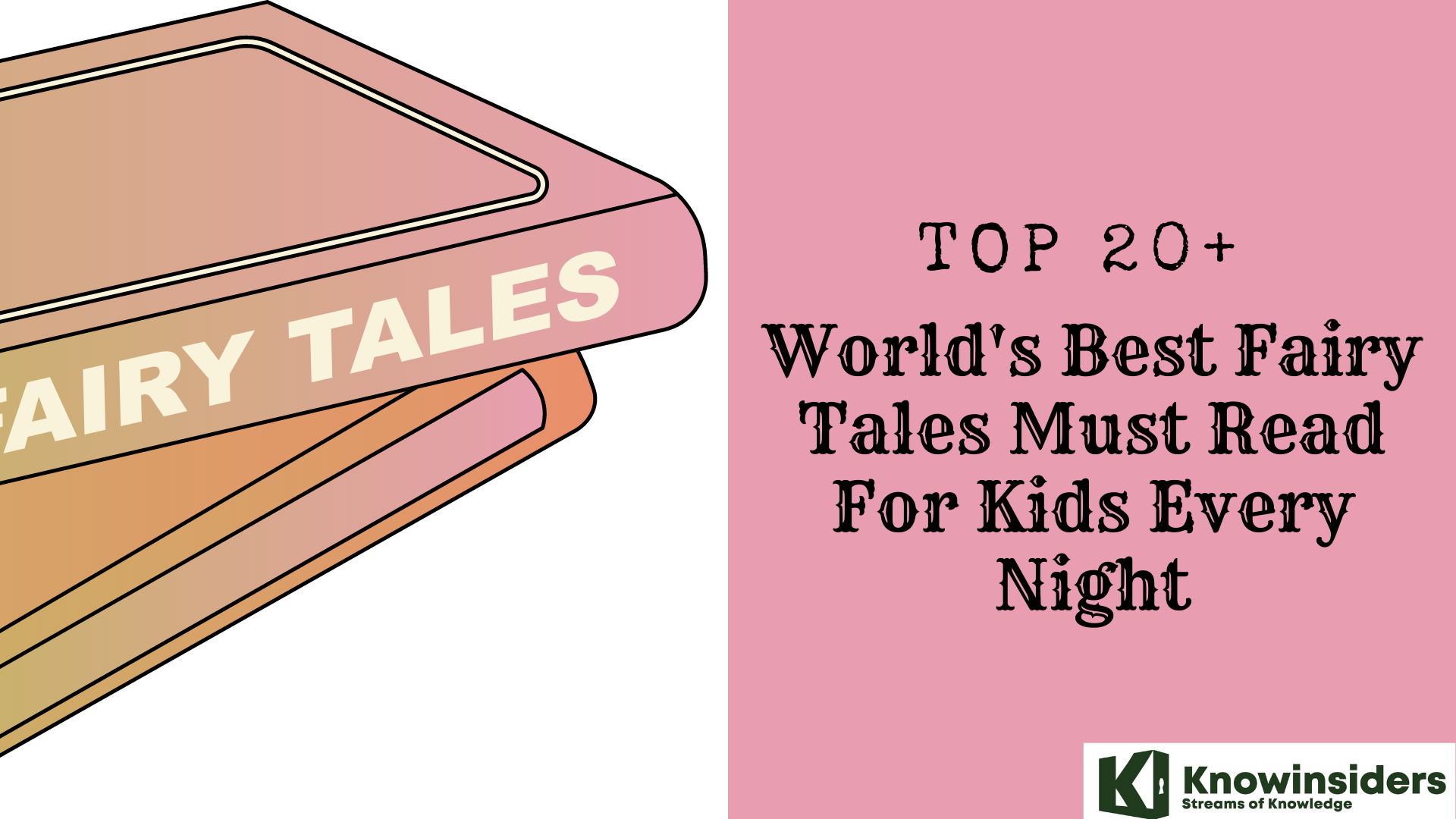 Top 20+ World's Best Fairy Tales (Full Text) Must Read For Kids Every Night Top 20+ World's Best Fairy Tales (Full Text) Must Read For Kids Every Night A good story is all kids need before their bedtime, and these best fairy tales will help your children fall to sleep much easier. |
 4 Simple Ways to Increase IQ for Kids: Play Games, Read Books, Exercise and Talk 4 Simple Ways to Increase IQ for Kids: Play Games, Read Books, Exercise and Talk Check out top 4 easy ways for children to have a higher IQ: Play games, read books, exercise and talk - According to Harvard University ... |
 Top 10 Best Free Websites to Download or Listen Audiobooks Right Now Top 10 Best Free Websites to Download or Listen Audiobooks Right Now If you’re a bookworm, getting audiobooks for free that you can download and listen to can save you a lot of money. Thankfully, these are ... |
 Top 20+ Best Free Sites Read Books Online Without Downloading Top 20+ Best Free Sites Read Books Online Without Downloading There are many online resources at your disposal, and they offer hundreds of eBooks (and audiobooks!) that you can access for free and enjoy at ... |



















